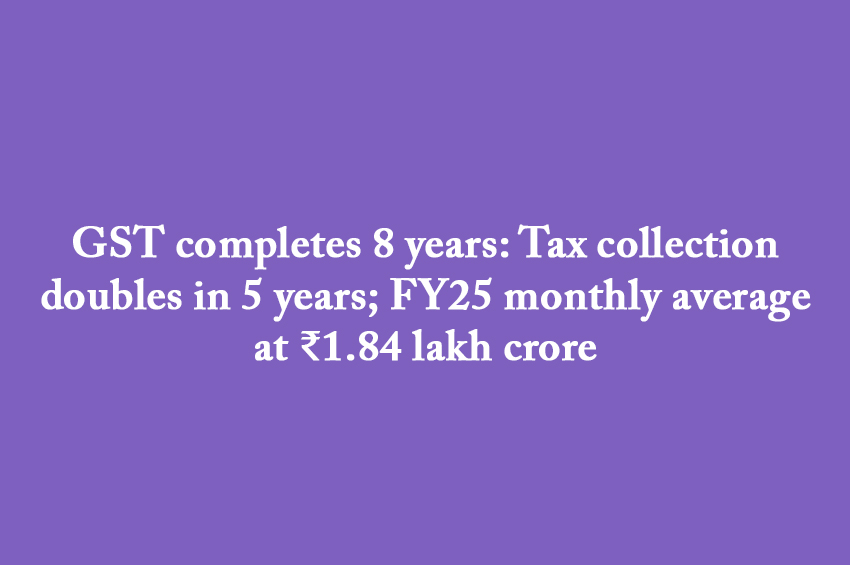Winning Bizness Desk
Mumbai. India has completed eight years since the implementation of the Goods and Services Tax (GST), which was launched at midnight on June 30, 2017. The tax regime has shown remarkable growth in revenue collection during this period. In the financial year 2024-25, gross GST collection reached ₹22.08 lakh crore, nearly double the ₹11.37 lakh crore collected in 2020-21. The average monthly collection for FY25 stood at ₹1.84 lakh crore, significantly higher than the ₹95,000 crore average recorded five years ago.
Taxpayer base expands sharply
Along with a surge in tax revenues, the number of registered taxpayers under GST has also more than doubled. From 65 lakh registered taxpayers in 2017, the figure has now crossed 1.51 crore. This expansion in the taxpayer base has strengthened the government's revenue system, allowing for better compliance and administration.
April 2025 saw highest-ever monthly GST collection
The government registered its highest-ever monthly GST collection in April 2025, with revenues touching ₹2.37 lakh crore. This marked a 12.6 percent year-on-year increase. The previous record was set just a year earlier in April 2024, when the collection stood at ₹2.10 lakh crore. Officials attribute the spike to strong domestic consumption, fiscal year-end clearances by businesses, and enhanced tax compliance.
GST reflects economic strength and compliance
GST collections are considered a key indicator of economic health. Higher collections are often associated with robust industrial activity, healthy consumer spending, and improved tax administration. According to KPMG India’s National Head Abhishek Jain, the record GST mop-up reflects a strong domestic economy. The surge in April collections is also attributed to businesses settling year-end transactions in March, leading to higher tax filings.
Simplifying indirect taxation since 2017
Introduced to unify India’s indirect tax system, GST replaced 17 central and state taxes along with 13 cesses. It operates across four rate slabs—5%, 12%, 18%, and 28%. The system is divided into four components: CGST (Central GST), SGST (State GST), IGST (Integrated GST for inter-state transactions and imports), and Cess (levied on luxury and demerit goods). Over the past eight years, the GST framework has helped streamline tax processes and boost transparency and compliance.
Key Summary Points:
- GST completes 8 years since its implementation in July 2017.
- Tax collection nearly doubled in 5 years, reaching ₹22.08 lakh crore in FY25.
- Monthly GST average for FY25 stood at ₹1.84 lakh crore.
- April 2025 recorded the highest-ever GST collection at ₹2.37 lakh crore.
- Registered GST taxpayers increased from 65 lakh in 2017 to over 1.51 crore now.
- Higher collections reflect a strong economy, better compliance, and streamlined filing.
- GST has simplified India’s indirect tax system with four rate slabs and unified structure.


